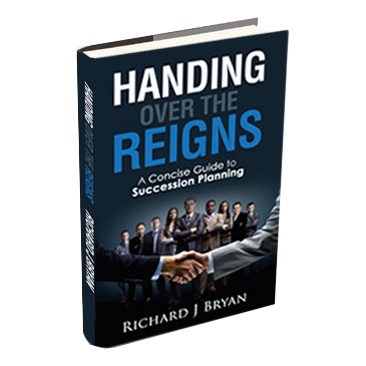Succession planning ensures the long-term continuity of a business by strategically identifying key roles and the talent needed to fill them. It includes a robust program of talent development to prepare future leaders to step into vacated roles, maintaining uninterrupted operations during a leadership transition. Businesses with an effective succession plan hardly miss a beat when leaders leave—whether they leave on schedule or unexpectedly.
Perhaps it is odd, then, that despite the enormous value succession planning delivers, only 35% of businesses have succession plans in place. Further, of those businesses that have implemented succession plans, most have only done so for the CEO position. They have completely overlooked the other strategically vital executive roles.
If we learned anything from the accelerated turnover rate for CEOs following the pandemic, it’s that leadership change can be rapid and devastating. No company can afford to be caught without successors ready to fill critical roles.
Why Succession Planning is Vital
Seamless transitions. With a succession plan in place, a company experiences seamless leadership transitions when key roles fall vacant. Without a plan, the company is left scrambling for successors while operations suffer. According to the Society of Human Resources (SHRM), new hires cost on average roughly $4000 to acquire. Recruiting those new hires may take from 45 to 70 days. Add to that the 45 to 60 days required to get them completely plugged in. Another entire year may pass before they are fully productive. Meanwhile, stakeholders grow nervous waiting for leadership to take the helm. Such uncertainty can wreak havoc on a company’s bottom line.
Cultural consistency. More than the bottom line is at stake, however, in a leadership transition. If the incoming leader isn’t fully aligned with the company’s core values, the entire culture can tilt off-axis. This misalignment is far too common when bringing in an external successor or promoting an under-prepared leader. On the other hand, succession planning allows time to instill into candidates the values essential to achieving the organization’s goals, ensuring continuity far into the future.
Morale and motivation. When succession planning is incorporated into a company’s culture, employees experience higher morale and greater motivation to be top performers. They can clearly see paths to career advancement laid out for them. Further, their confidence in the firm’s stability grows, making them more likely to stick around. Retention rates rise. This kind of environment attracts qualified new talent as well.
Resiliency and sustainability. As the business landscape keeps changing, companies must be agile enough to respond quickly. The succession planning process keeps top leadership up-to-speed on the functioning of vital roles and internal talent development. This will help maintain resilience during downturns and sustainability over the long haul.
To deliver all the benefits spelled out above, succession planning requires six key components. And underlying them all is a foundation you can begin to lay now: an established culture of succession. Let’s explore what that looks like.
Six Essential Components of Effective Succession Planning
When it comes to succession planning, I like to think in terms of creating a culture of succession in the company. In my car dealership business each department manager had to have a designated No.2 to cover them when they were away on vacation, out sick, attending a meeting with a customer, or at a manufacturer meeting. Normally, this added up to about 6 weeks per year. The good thing about this approach is that it enabled some on-the-job training for the potential successor. My HR manager Pauline also made sure that a comprehensive training program was put in place to give the next-in-line the necessary skills and experience to further their career.
One of the keys to making this approach work is to let your leaders know that the only way they can progress their career is to train their replacement so one day they can move on from their existing role. This changes the whole picture: The successor is no longer seen as a potential threat but as an ally and an asset to the company. It also encourages on-the-job training and mentoring, which is a vital part of continuous team development. At the same time, the manager or department head gets to improve their coaching skills.
In the following specific steps, notice how this aspect of company culture—this mindset that succession planning benefits everyone—is built into each component.
1. Communicate
- Involve senior leadership team members and trusted advisors in planning. Human resources can play a part in providing tools, data, and resources, but leadership needs to spearhead the process. Be transparent with the workforce. Communicate openly about the purpose of planning to assure the longevity and stability of the organization.
- Let partners such as suppliers, banks, and financial institutions know you’re engaged in this process, so they gain confidence in your commitment to planning to thrive over the long term.
2. Look around and ahead
- Conduct a business review to assess the company’s current standing. What is serving the business well? Where is profitability lagging? How well is the business competing with others in the same industry?
- Next, evaluate trends in the market. How is your company poised to take advantage of those trends?
- Assess career expectations among the external workforce. What kinds of benefits, advancement opportunities, remote-work options, continuing education, etc., appeal to them? What can/does your company do to match those expectations?
3. List critical roles and potential vacancies
- Determine which roles are essential to the company’s ability to function. Remember to look at the C-suite and beyond when identifying these key roles.
- Note the skills, knowledge, and experience currently required in these roles. (Note, too, those that may be required as roles evolve in the future.)
- Map out the likely timing of vacancies due to retirement or promotion. Here, again, open communication is vital for leaders to express their goals and for the planning team to assure them that business sustainability—not their exit—is the goal of the process.
- As you examine this list of vital roles, you’ll want to make a contingency plan in case of sudden, unexpected leadership change (due to death, for example). While this plan is similar to a succession plan, a contingency plan only provides a rapid, short-term (think: temporary) response to an unexpected event or crisis that could disrupt usual business operations. It lacks the kind of long-range development of talent that is the basis of effective succession planning.
4. Identify potential successors
- Seek nominations from your pool of internal talent (or family members in a family-owned business).
- Sit down with high-potential candidates and discuss their career goals and plans. Check on their interest in pursuing a leadership track.
- Assess the candidates’ skills and knowledge. Rate their readiness to enter a particular role, using an objective measurement scale.
5. Implement and incentivize leadership development
- Craft a training program to prepare your successors for their future roles. Remember the on-the-job training and mentoring I mentioned earlier? That can be part of the program. Add in additional education or training as needed for your company’s roles.
- In a family-owned business, development for a family member might include employment in a variety of positions—possibly with other companies—to expand a successor’s experience and perspective.
- Track candidates’ progress through their development program, regularly re-evaluating their readiness.
- Communicate (there’s that word again) the value of developing internal talent as opposed to the costly and slow on-boarding process of importing successors from outside.
6. Review the succession plan annually
- Re-evaluate your situation according to changes in your industry over the last twelve months.
- Re-visit the list of essential roles. What new roles do you see on the horizon, and how can you adapt your list to address them?
- Examine data from current readiness ratings of your strongest candidates to assess how their development is progressing.
- Do a new gap analysis, considering existing (and predicted) roles to fill. Where is your workforce lacking in skills, knowledge, or experience required for those roles? How should hiring practices support the filling of those gaps? How will your development program address any new needs going forward?
To carry out all these steps requires serious commitment to the process of succession planning. This commitment is, at its foundation, a dedication to the success and growth of the business itself.
If your company is committed to long-term growth and stability, let’s talk [link: https://richardjbryan.com/contact/ ] about how we might work together to build your company culture of succession.


